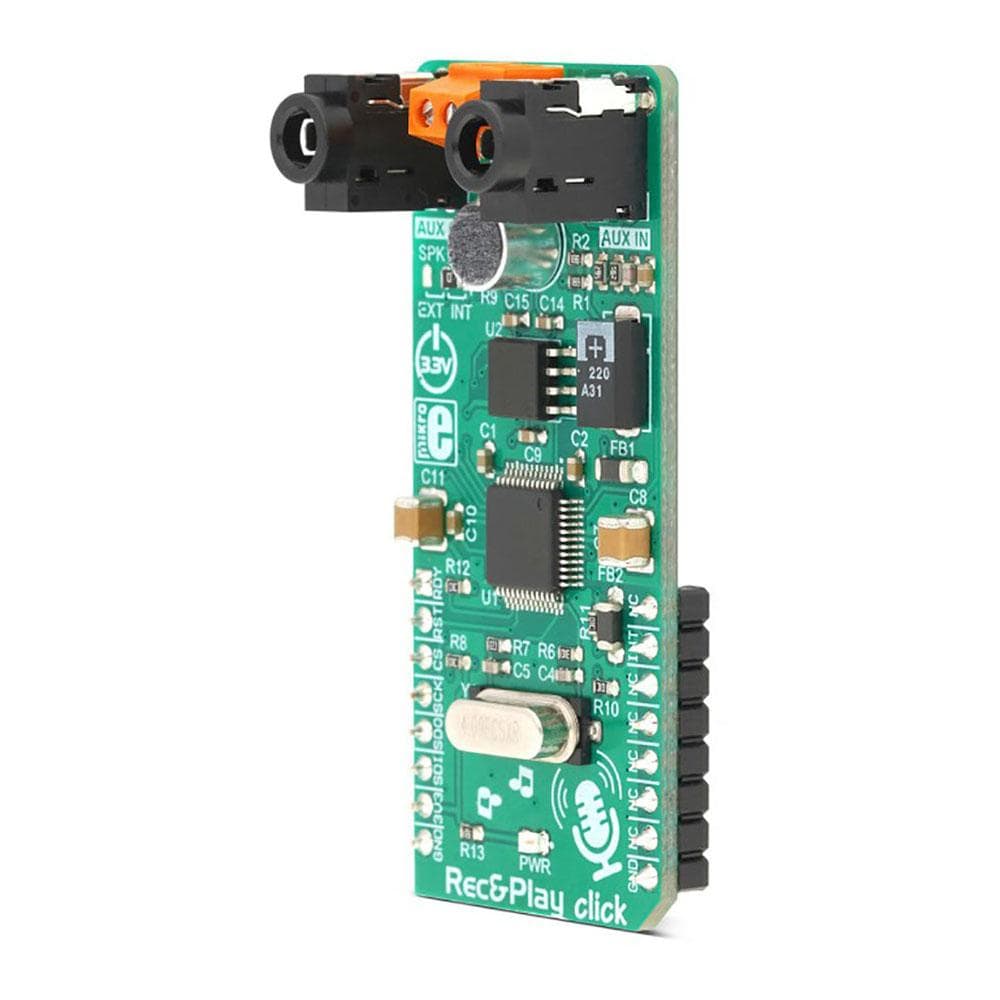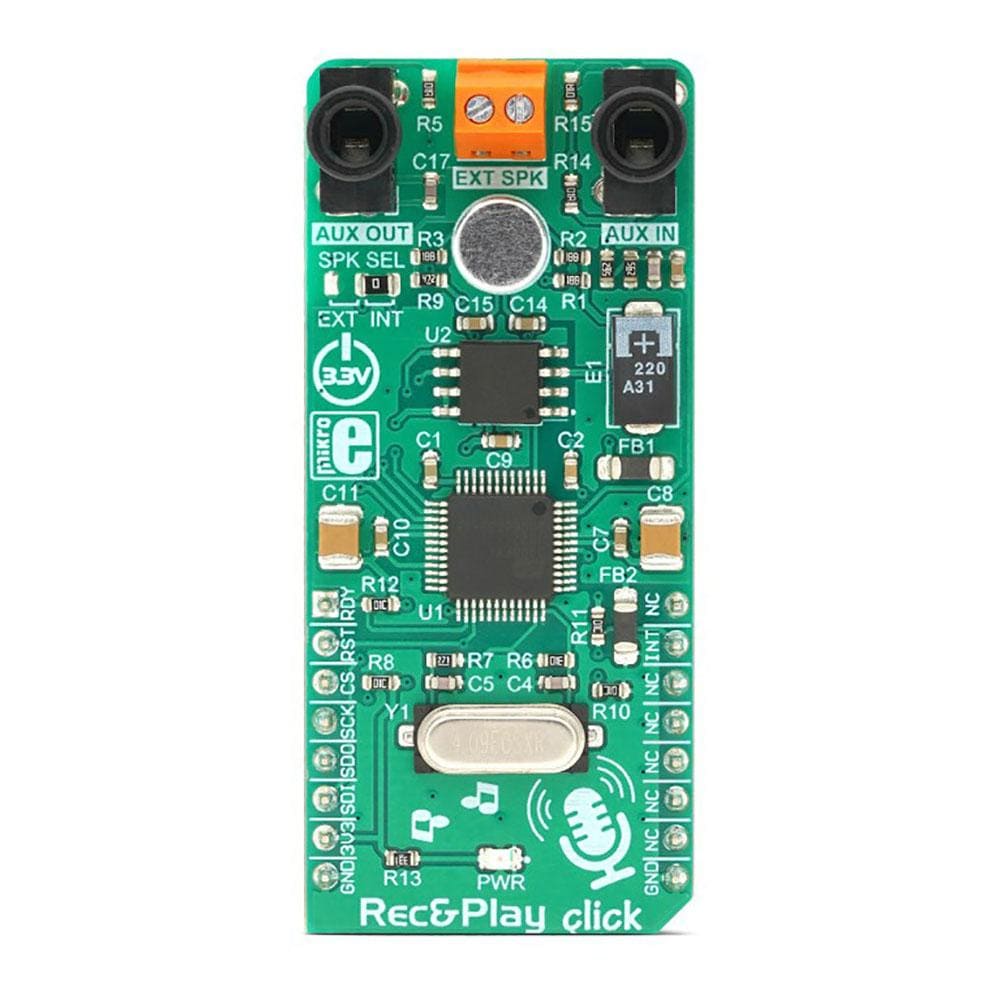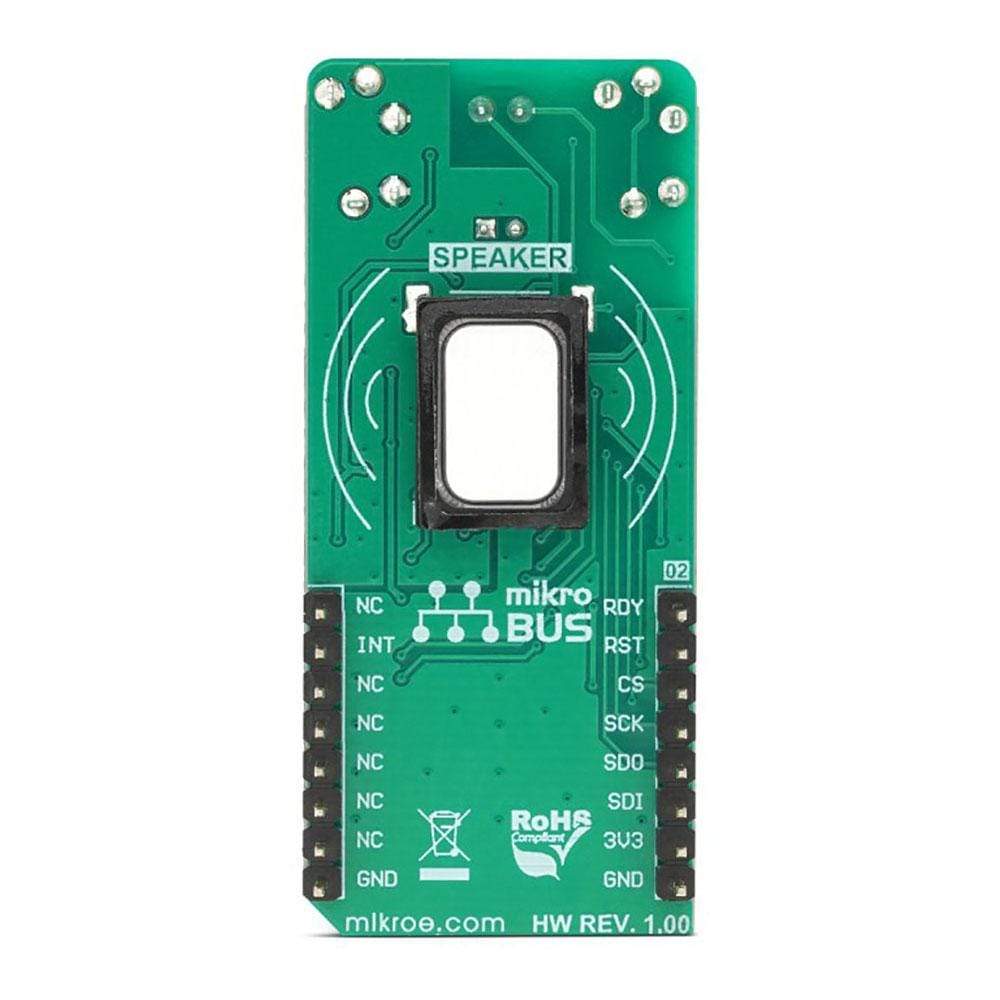


Overview
The Rec&Play Click Board™ is a digital voice recorder on a Board. It is based on the ISD3900, a multi-message record and playback device. It features the ChipCorder' technology, offering digital sound compression, smart message management, digitally configurable signal path, and more. Several audio inputs and outputs are available to the user. A small omnidirectional electret mic, as well as a miniature 700mW neodymium speaker, are included on the Click Board™, making it a complete playback & recording solution, capable of capturing up to 32 minutes of audio. It also offers numerous connectivity options.
The Rec&Play Click Board™ is supported by a mikroSDK compliant library, which includes functions that simplify software development. This Click Board™ comes as a fully tested product, ready to be used on a system equipped with the mikroBUS socket.
Downloads
Das Rec&Play Click Board™ ist ein digitaler Sprachrekorder auf einer Platine. Es basiert auf dem ISD3900, einem Gerät zur Aufzeichnung und Wiedergabe mehrerer Nachrichten. Es verfügt über die ChipCorder-Technologie und bietet digitale Tonkomprimierung, intelligente Nachrichtenverwaltung, digital konfigurierbaren Signalpfad und mehr. Dem Benutzer stehen mehrere Audioeingänge und -ausgänge zur Verfügung. Ein kleines omnidirektionales Elektretmikrofon sowie ein Miniatur-Neodym-Lautsprecher mit 700 mW sind im Click Board™ enthalten und machen es zu einer vollständigen Wiedergabe- und Aufnahmelösung, mit der bis zu 32 Minuten Audio aufgezeichnet werden können. Es bietet außerdem zahlreiche Anschlussmöglichkeiten.
Das Rec&Play Click Board™ wird von einer mikroSDK-kompatiblen Bibliothek unterstützt, die Funktionen enthält, die die Softwareentwicklung vereinfachen. Dieses Click Board™ wird als vollständig getestetes Produkt geliefert und ist bereit für den Einsatz auf einem System, das mit der mikroBUS-Buchse ausgestattet ist.
| General Information | |
|---|---|
Part Number (SKU) |
MIKROE-3345
|
Manufacturer |
|
| Physical and Mechanical | |
Weight |
0.025 kg
|
| Other | |
Country of Origin |
|
HS Code Customs Tariff code
|
|
EAN |
8606018714445
|
Warranty |
|
Frequently Asked Questions
Have a Question?
Be the first to ask a question about this.



